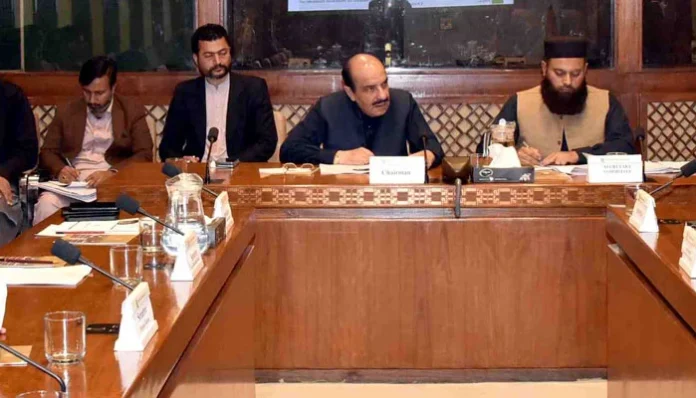Senate sub-body shown concern over awarding contracts to NXCC, RADC
PSS warns of rising stroke cases among young adults
Court remands journalist in NCCIA custody
Pak-China Friendship Hospital vital pillar of social structure of CPEC: DG, GDA
Drivers using fake number plates, tinted glasses, police lights booked
Balochistan coalition leaders vows unity, review political, security, development affairs
Senate body demands PIFD Vice Chancellor’s accountability on remaining in office for 25 years
City Mayor expresses concern over ticket-tax collection in Wazir Bagh
Int’l community has not made meaningful contribution to climate change: Ahsan Iqbal
Federal Govt determined to provide maximum facilities to energy consumers: Awais Leghari
ISLAMABAD, Nov 28 (APP):Federal Minister for Energy Awais Ahmad Khan Leghari has said that the government was determined to provide maximum facilities to energy consumers.
He expressed these views at the launch of the upgraded Helpline 118, which he formally inaugurated.
Leghari said that transparency was being ensured within the Ministry of Energy, adding that self-accountability was impossible “until we expose ourselves to scrutiny.”
“We are committed to implementing the principles of reform within the ministry,” he affirmed.
He added that the new system will highlight shortcomings at every level — “from linemen to senior officials” — and that the responsibility for these mistakes would also have to be assumed by the department.
Awais Leghari said that through this upgraded complaint system, all consumers across the country—regardless of their social or economic background—will be able to register their complaints on a single platform.
He said the service would provide consumers with complete records of each complaint, including its registration details, date, time, and status, enabling full accountability of staff performance.
The minister said the system would positively impact every electricity consumer in the country. He urged the Chief Executive Officers (CEOs) of power distribution companies to ensure its successful implementation.
He also assured that once the system proves successful, employees of the respective companies will be rewarded “to the maximum extent possible.”
Highlighting the importance of accurate information, Leghari said the ministry relies heavily on DISCOs and data gathering.
“Under the leadership of the Prime Minister, efforts are underway to bring improvements across all sectors,” he remarked.
He urged all relevant departments to take ownership of the service to ensure its success, noting that its effective implementation is also a key aspiration of the Prime Minister.
Upgraded Helpline 118 added advanced features including seven regional language options, robotic calling option, line man monitoring system, among other prominent features to provide value services to all its consumers.










